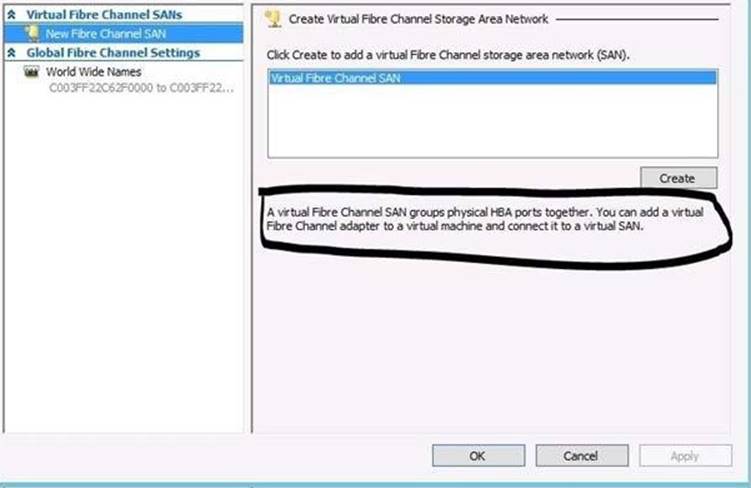What should you do first?
You have a server named Server1 that runs Windows Server 2012 R2. Server1 has the Hyper-V server role installed.
Server1 is connected to two Fibre Channel SANs and is configured as shown in the following table.

You have a virtual machine named VM1.
You need to configure VM1 to connect to SAN1.
What should you do first?
A . Add one HBA
B . Create a Virtual Fibre Channel SA
D . Create a Hyper-V virtual switch.
E . Configure network adapter teaming.
Answer: B
Explanation:
You need your virtualized workloads to connect easily and reliably to your existing storage arrays.
Windows Server 2012 provides Fibre Channel ports within the guest operating system, which allows you to connect to Fibre Channel directly from within virtual machines. This feature protects your investments in Fibre Channel, enables you to virtualize workloads that use direct access to Fibre Channel storage, allows you to cluster guest operating systems over Fibre Channel, and provides an important new storage option for servers hosted in your virtualization infrastructure.
With this Hyper-V virtual Fibre Channel feature, you can connect to Fibre Channel storage from within a virtual machine. This allows you to use your existing Fibre Channel investments to support virtualized workloads.
Support for Fibre Channel in Hyper-V guests also includes support for many related features, such as virtual SANs, live migration, and MPIO.


